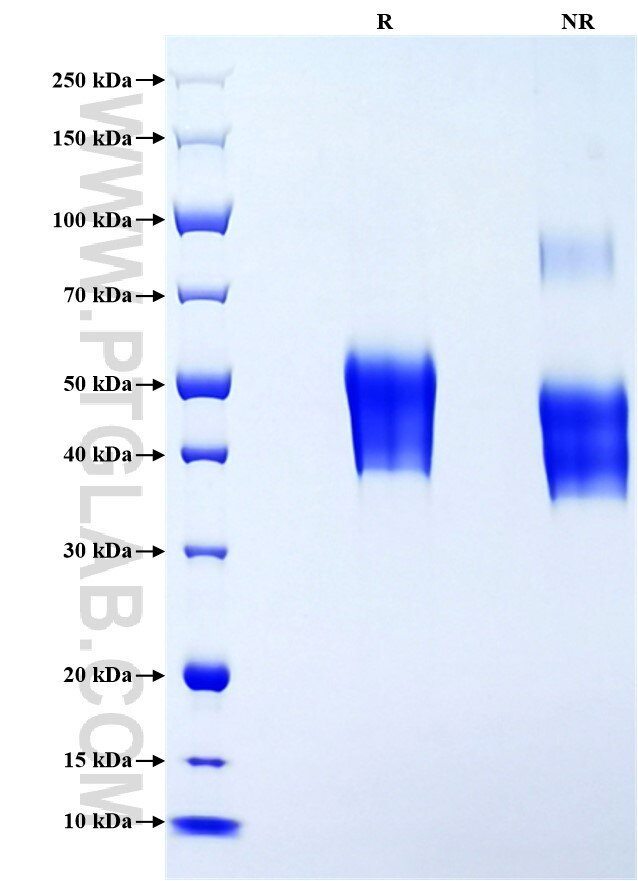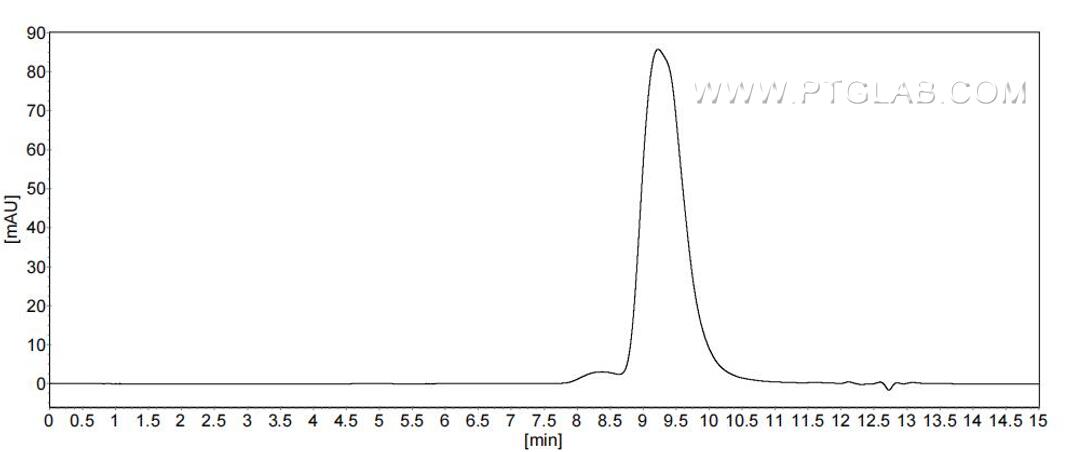Recombinant Human CD38 protein (Myc Tag, His Tag) (HPLC verified)
Species
Human
Purity
>90 %, SDS-PAGE
>90 %, SEC-HPLC
Tag
Myc Tag, His Tag
Activity
not tested
Cat no : Eg0110
Validation Data Gallery
Product Information
| Purity | >90 %, SDS-PAGE >90 %, SEC-HPLC |
| Endotoxin | <0.1 EU/μg protein, LAL method |
| Activity |
Not tested |
| Expression | HEK293-derived Human CD38 protein Val43-Ile300 (Accession# P28907-1) with a Myc tag and a His tag at the C-terminus. |
| GeneID | 952 |
| Accession | P28907-1 |
| PredictedSize | 34.9 kDa |
| SDS-PAGE | 38-55 kDa, reducing (R) conditions |
| Formulation | Lyophilized from 0.22 μm filtered solution in PBS, pH 7.4. Normally 5% trehalose and 5% mannitol are added as protectants before lyophilization. |
| Reconstitution | Briefly centrifuge the tube before opening. Reconstitute at 0.1-0.5 mg/mL in sterile water. |
| Storage Conditions |
It is recommended that the protein be aliquoted for optimal storage. Avoid repeated freeze-thaw cycles.
|
| Shipping | The product is shipped at ambient temperature. Upon receipt, store it immediately at the recommended temperature. |
Background
CD38, also known as ADP-ribosyl cyclase 1, is a type II transmembrane glycoprotein with a short N-terminal cytoplasmic tail, a single membrane-spanning domain, and a C-terminal extracellular region with four N-glycosylation sites. The extracellular domain of CD38 has bifunctional enzyme activities that catalyze synthesis of cyclic ADP ribose from nicotinamide adenine dinucleotide (NAD) and hydrolysis of cyclic ADP ribose to adenosine diphosphoribose. CD38 is expressed on a variety of hematopoietic and non-hematopoietic cells and is involved in diverse processes such as generation of calcium-mobilizing metabolites, cell activation, and chemotaxis. In addition to the membrane form, CD38 can also exist as a soluble form (sCD38), which is derived from the membrane form by proteolytic cleavage occurring near the cell membrane.
References:
1. Jackson DG. et al. J Immunol. 1990;144(7):2811-2815. 2. Funaro A. et al.1996;8(11):1643-1650. 3. Cho YS. et al. J Biol Chem. 2000;275(3):1685-1690. 4. Lebedev MJ. et al. 2004;30(6):552-556. 5. Schneider M. et al. PLoS One. 2015;10(5):e0126007.


